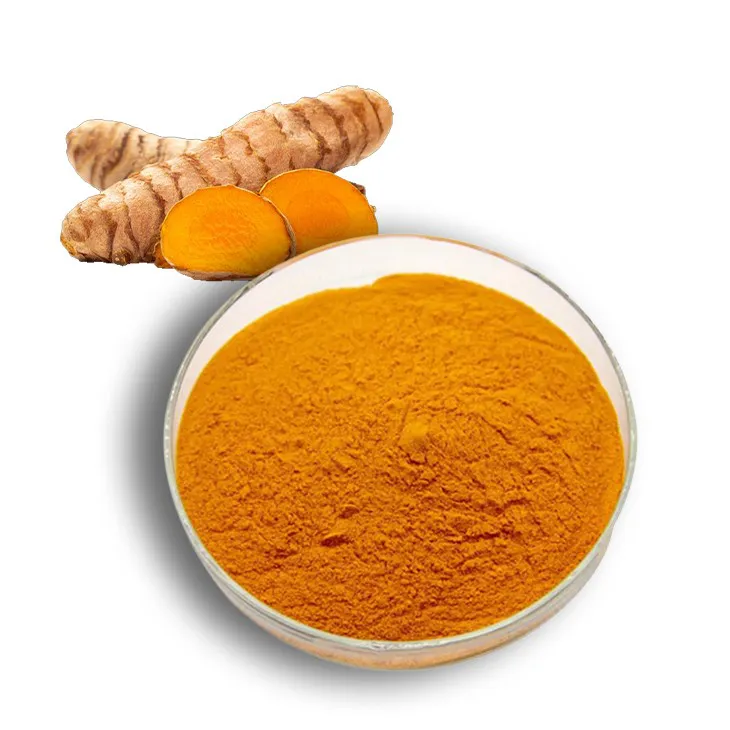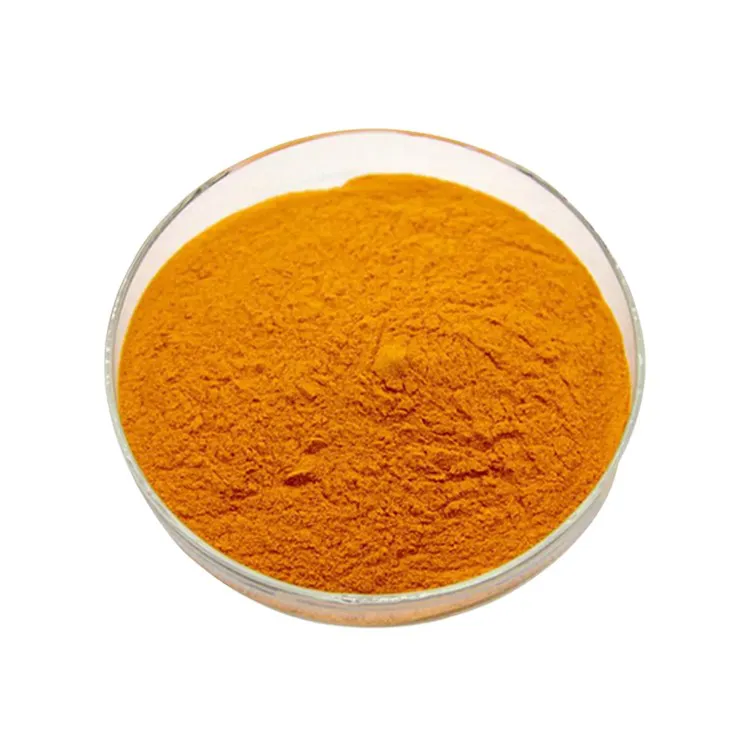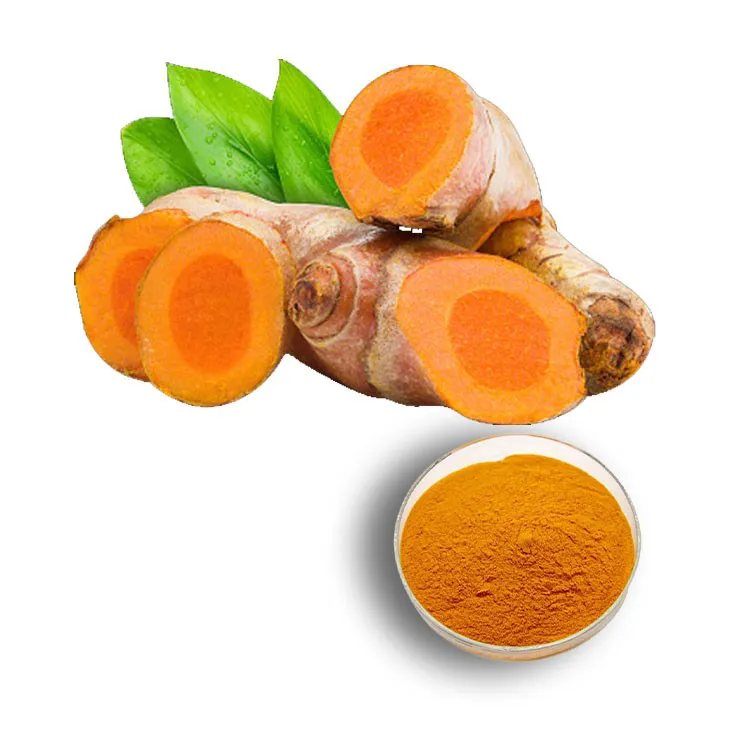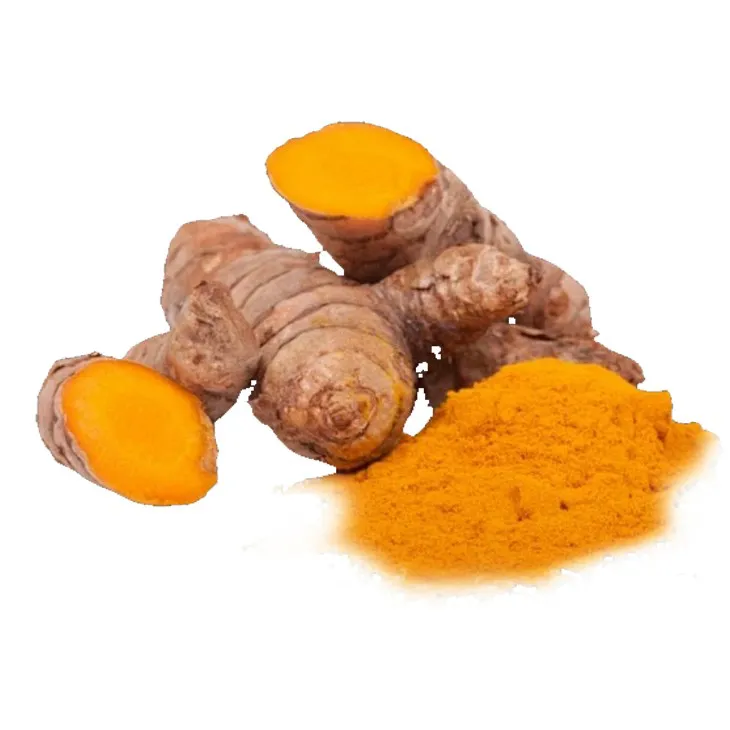- 0086-571-85302990
- sales@greenskybio.com
The process of extracting curcumin crystals from curcumin.
2024-11-26

1. Introduction
Curcumin, a natural polyphenolic compound, has been widely recognized for its numerous potential applications in various fields such as medicine, food, and cosmetics. Curcumin crystals, in particular, possess enhanced stability and bioavailability compared to Curcumin in its raw form. The extraction of curcumin crystals from curcumin is a complex yet fascinating process that involves multiple scientific, practical, and quality - related aspects.

2. Scientific Basis of the Extraction
2.1 Chemical Properties of Curcumin
Curcumin has a unique chemical structure that determines its solubility and reactivity. It is a hydrophobic compound, which means it has low solubility in water but is relatively soluble in organic solvents. This property is crucial in the extraction process as it dictates the choice of solvents. For example, solvents like ethanol, acetone, and ethyl acetate are often considered due to their ability to dissolve curcumin effectively. The presence of phenolic hydroxyl groups in curcumin's structure also plays a role in its extraction, as these groups can interact with other substances during the process.
2.2 Principles of Crystal Formation
Crystal formation of curcumin is based on the principles of supersaturation. When the concentration of curcumin in a solution exceeds its solubility limit, the excess curcumin begins to precipitate out in the form of crystals. This can be achieved through various methods such as evaporation of the solvent or by changing the temperature or pH of the solution. For instance, cooling a saturated solution of curcumin can lead to the formation of crystals as the solubility of curcumin decreases with decreasing temperature.

3. Practical Extraction Methods
3.1 Solvent Extraction
- Selection of Solvent: As mentioned earlier, the choice of solvent is critical. Ethanol is a commonly used solvent due to its relatively low toxicity and good solubility for curcumin. It is often used in a ratio of about 1:5 to 1:10 (curcumin to ethanol) depending on the purity of curcumin. For example, if starting with a relatively impure curcumin source, a higher ratio of ethanol may be required.
- Extraction Procedure: The curcumin source, which could be turmeric powder (rich in curcumin), is mixed with the selected solvent in a suitable container. This mixture is then stirred continuously for a period of time, typically several hours. For instance, in a laboratory - scale extraction, it may be stirred for 3 - 6 hours at room temperature. The stirring helps in increasing the contact between the curcumin and the solvent, facilitating the dissolution of curcumin into the solvent.
- Filtration: After the extraction period, the mixture is filtered to separate the liquid extract (containing dissolved curcumin) from the solid residue. This can be done using filter paper in a simple filtration setup or using more advanced filtration equipment such as a Buchner funnel in a laboratory setting. The filtrate obtained is rich in curcumin and is ready for the next step in the extraction process.
3.2 Supercritical Fluid Extraction
- Principle of Supercritical Fluids: Supercritical fluid extraction utilizes the unique properties of supercritical fluids, which have properties between those of a liquid and a gas. Carbon dioxide is a commonly used supercritical fluid in Curcumin Extraction. In its supercritical state, carbon dioxide has a high diffusivity and low viscosity, which allows it to penetrate into the matrix of the curcumin - containing material (such as turmeric) and dissolve curcumin effectively.
- Extraction Setup and Process: The supercritical fluid extraction system consists of a pump to pressurize the carbon dioxide, a temperature - controlled extraction vessel where the curcumin - containing material is placed, and a separator to collect the extracted curcumin. The carbon dioxide is pressurized and heated to its supercritical state and then passed through the extraction vessel. The curcumin is dissolved in the supercritical carbon dioxide and is then transferred to the separator, where the pressure is reduced, causing the carbon dioxide to return to its gaseous state and leaving the curcumin behind.

4. Considerations for Quality Control
4.1 Purity of the Starting Material
The purity of the curcumin starting material significantly affects the quality of the extracted curcumin crystals. If the starting material contains a high amount of impurities such as other plant components (in the case of turmeric - derived curcumin), it can lead to a lower purity of the final crystal product. For example, turmeric powder may contain proteins, starches, and other phenolic compounds along with curcumin. These impurities can interfere with the extraction process and contaminate the final product. Therefore, it is important to use a high - quality starting material or to purify the starting material before extraction.
4.2 Optimization of Extraction Conditions
- Temperature: In solvent extraction, the temperature can affect the solubility of curcumin in the solvent. Too high a temperature may lead to the degradation of curcumin, while too low a temperature may result in incomplete extraction. For example, in ethanol extraction, a temperature range of 40 - 60 °C is often considered optimal.
- pH: The pH of the extraction solution also plays a role. Curcumin is stable in a relatively neutral to slightly alkaline pH range. If the pH is too acidic or too alkaline, it can cause chemical changes in curcumin, affecting its quality. For instance, in some extraction processes, maintaining a pH around 7 - 8 can help in obtaining high - quality curcumin crystals.
- Extraction Time: The length of the extraction time needs to be optimized. If the extraction time is too short, not all the curcumin may be dissolved, leading to a low yield. However, if the extraction time is too long, it may increase the chances of impurity extraction and also may cause degradation of curcumin. In solvent extraction, as mentioned earlier, 3 - 6 hours is a typical optimal extraction time.
4.3 Purification of the Extracted Curcumin
After the initial extraction, the Curcumin Extract may still contain some impurities. Purification methods are required to obtain high - quality curcumin crystals. One common method is recrystallization. In recrystallization, the Curcumin Extract is dissolved in a suitable solvent at a high temperature, and then the solution is slowly cooled. As the solution cools, pure curcumin crystals start to form while the impurities remain in the solution. Another method is chromatography, which can be used to separate curcumin from other closely related compounds based on their different affinities for the stationary and mobile phases in the chromatographic system.

5. Applications of Curcumin Crystals
5.1 In the Pharmaceutical Industry
Curcumin crystals have shown potential in various pharmaceutical applications. Their enhanced stability and bioavailability make them suitable for drug development. For example, they have been studied for their anti - inflammatory properties. Curcumin crystals can potentially be formulated into tablets or capsules for the treatment of inflammatory diseases such as arthritis. They may also have antioxidant and anticancer properties, and ongoing research is exploring their use in cancer prevention and treatment.
5.2 In the Food and Beverage Industry
- As a Natural Colorant: Curcumin crystals are used as a natural food colorant due to their bright yellow color. They can be added to various food products such as processed meats, baked goods, and dairy products to enhance their visual appeal.
- As a Nutraceutical Ingredient: In the health - conscious food market, curcumin crystals are added to functional foods and beverages as a nutraceutical ingredient. They can provide potential health benefits such as antioxidant and anti - inflammatory effects to consumers.
5.3 In the Cosmetics Industry
Curcumin crystals are finding their way into the cosmetics industry. They can be used in skin care products for their antioxidant and anti - inflammatory properties. For example, they may be included in creams and lotions to help soothe irritated skin and protect against oxidative damage. They may also be used in hair care products, potentially promoting hair health due to their beneficial properties.

6. Conclusion
The extraction of curcumin crystals from curcumin is a multi - faceted process that involves scientific understanding, practical extraction methods, and strict quality control. The choice of extraction method, the quality of the starting material, and the optimization of extraction conditions all play crucial roles in obtaining high - quality curcumin crystals. With the increasing demand for natural products with diverse applications, the extraction of curcumin crystals is likely to continue to be an area of active research and development, especially considering their potential applications in pharmaceutical, food, and cosmetics industries.
FAQ:
Question 1: What are the main methods for extracting curcumin crystals from curcumin?
There are several common methods for extracting curcumin crystals from curcumin. One of the main methods is solvent extraction. In this process, suitable solvents such as ethanol or acetone are used to dissolve curcumin. Then, through processes like evaporation and crystallization, curcumin crystals can be obtained. Another method may involve chromatography techniques, which can separate and purify curcumin to form crystals.
Question 2: What factors need to be considered in the extraction process of curcumin crystals?
Several factors need to be considered. Firstly, the choice of solvent is crucial as it affects the solubility of curcumin and the purity of the final crystals. Temperature also plays an important role. Different temperatures can influence the solubility and the rate of crystallization. Additionally, the purity of the starting curcumin material is a factor. Impurities in the original curcumin can interfere with the crystallization process and the quality of the resulting crystals.
Question 3: How does the extraction process affect the quality of curcumin crystals?
The extraction process has a significant impact on the quality of curcumin crystals. If the extraction is not carried out properly, impurities may be incorporated into the crystals. For example, improper solvent selection or incomplete purification steps can lead to lower purity. The crystallization conditions, such as the rate of cooling during crystallization, can also affect the crystal size and shape, which in turn can influence the bioavailability and other properties of the curcumin crystals.
Question 4: What are the scientific principles behind the extraction of curcumin crystals?
The scientific principles mainly involve solubility and phase separation. Curcumin has different solubilities in different solvents. By choosing the appropriate solvent, curcumin can be dissolved. Then, through changing the conditions such as temperature or concentration, the solubility of curcumin in the solvent can be reduced, leading to the formation of crystals. Chromatography techniques are based on the differential adsorption and separation of curcumin from other substances in a mobile and stationary phase system.
Question 5: Are there any practical challenges in the extraction of curcumin crystals?
Yes, there are practical challenges. One challenge is the cost - effectiveness of the extraction process. Some solvents may be expensive or difficult to handle, which can increase the cost. Another challenge is achieving high - purity crystals in a large - scale production. Maintaining consistent extraction conditions in a large - scale operation can be difficult, which may lead to variations in crystal quality.
Related literature
- Improved Extraction and Crystallization of Curcumin for Enhanced Bioactivity"
- "Solvent - Based Extraction of Curcumin Crystals: A Comprehensive Review"
- "The Role of Temperature in Curcumin Crystal Extraction"
- ▶ Hesperidin
- ▶ Citrus Bioflavonoids
- ▶ Plant Extract
- ▶ lycopene
- ▶ Diosmin
- ▶ Grape seed extract
- ▶ Sea buckthorn Juice Powder
- ▶ Fruit Juice Powder
- ▶ Hops Extract
- ▶ Artichoke Extract
- ▶ Mushroom extract
- ▶ Astaxanthin
- ▶ Green Tea Extract
- ▶ Curcumin
- ▶ Horse Chestnut Extract
- ▶ Other Product
- ▶ Boswellia Serrata Extract
- ▶ Resveratrol
- ▶ Marigold Extract
- ▶ Grape Leaf Extract
- ▶ New Product
- ▶ Aminolevulinic acid
- ▶ Cranberry Extract
- ▶ Red Yeast Rice
- ▶ Red Wine Extract
-
Sugarcane Extract
2024-11-26
-
Oyster Mushroom Extract Powder
2024-11-26
-
Longan Extract
2024-11-26
-
Avocado Extract Powder
2024-11-26
-
Boswellia Serrata Extract
2024-11-26
-
Saw Palmetto Extract
2024-11-26
-
Yellow Pine Extract
2024-11-26
-
Red Wine Extract
2024-11-26
-
Milk Thistle Extract
2024-11-26
-
Apricot Powder
2024-11-26





















